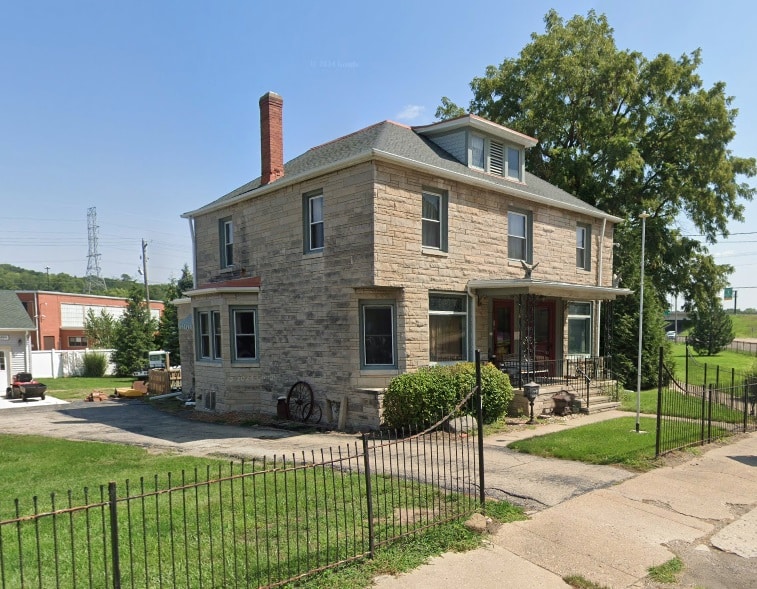One of the most important standard reference works on the early history of Tazewell County was Charles C. Chapman’s “History of Tazewell County, Illinois.” Published in 1879, only 52 years after Tazewell County was created, this 794-page volume draws upon official documents, publications (including local historian William H. Bates’ 1876 Pekin City Directory), and living recollections of the county’s early settlers to tell the stories of Tazewell’s founders and pioneers.
Local historians and genealogists owe Chapman a great debt for compiling and editing this history. It’s only natural to wonder who Charles C. Chapman was and what led him to prepare this book. As we shall see, to answer those questions we’ll need to compare apples and oranges.
While it’s common for authors or editors to provide some biographical information about themselves in their books, in this case we get little help from Chapman’s title page and preface. All we can learn from them is that Chapman signed his preface from Pekin, and that the book was printed and published by Charles C. Chapman and Co. in Chicago.
The preface signature doesn’t necessarily mean Chapman made Pekin his home, and in fact he did not. He wasn’t even from Tazewell County. Chapman probably only spent time in Pekin and Tazewell County for the purpose of researching and compiling the county’s history, but in the 1870s his home was in fact in Chicago, where his publishing company was based.

If he wasn’t even a Tazewellite, why was he interested in Tazewell County history? A “Genealogy Today” article from 2010, titled, “From Apples to Oranges: Portrait and Biographical Albums,” explains:
“The Chapman family, which formed Chapman Bros. and Chapman Publishing, traces its history back to John Chapman, or Johnny Appleseed to most of us. Johnny’s journeys resulted in part of the family migrating to Chicago. In the Windy City, Frank M. Chapman and Charles O. Chapman went into business as Chapman Bros. Located at 71 and 73 W. Monroe Street in Chicago, Chapman Brothers were printers, publishers, and lithographers.
“Their most prolific publications were the ‘Portrait and Biographical Albums.’ They had stumbled onto a creative way to write all those biographies. They charged customers to have their biography included — and then the customer did the writing!”
Frank and Charles had a cousin, named Charles Clarke Chapman, born July 2, 1853 in Macomb, Ill., the son of Sidney Smith Chapman (1827-1893) and Rebecca Jane Clarke (1830-1874). Charles Clarke occasionally collaborated with Frank and Charles in producing “Portrait and Biographical Records” as well as histories of counties from several Midwestern states (chiefly Illinois, Iowa, Wisconsin, Kansas, Nebraska, Ohio and Michigan).
“From Apples to Oranges” continues:
“Another relative, Charles Clark (sic) Chapman, took part in producing some of the histories. Born in Macomb, Illinois, Charles Clark Chapman had hoped to attend Eureka College in Eureka, Illinois, but could not afford the tuition. Instead he headed West and made his fortune in California real estate and is credited with introducing the Valencia orange to the American market.
“While he never did attend college, Charles Clark Chapman does have a university named in his honor. Hesperian College was foundering financially and Charles Clarke Chapman bailed them out. It probably wasn’t too difficult since he was one of the founders of the Farmers and Merchants Bank in Fullerton, Calif. Later the bank become known as the Bank of Italy and eventually it became what it is today: the Bank of America. Out of gratitude, the college renamed itself Chapman University.”
To be precise, the college renamed itself Chapman College, and it later became a university. Its namesake, who hadn’t been able to afford the $100 tuition to Eureka College, was none other than the Charles C. Chapman who compiled and edited the 1879 Tazewell County history. In the same year, several other county histories came out under his name, some published by Chapman Bros., some by Charles C. Chapman and Co.
Valuable as Chapman’s “History of Tazewell County” is, it’s remarkable that Chapman wasn’t even a Tazewell County pioneer, but instead was a successful Gilded Age land agent, banker, oil man, and orange grower (known as “The Orange King of California”), even being elected Mayor of Fullerton in Orange County, Calif. His autobiography was later published as “The Career of a Creative Californian 1853-1944.” Charles Clarke Chapman died April 5, 1944, in Fullerton, and is buried with his wives and family in a grand monument tomb in Forest Lawn Memorial Park in Glendale, Calif.










